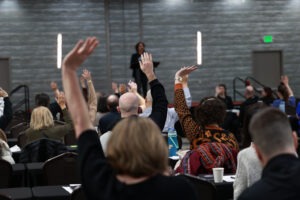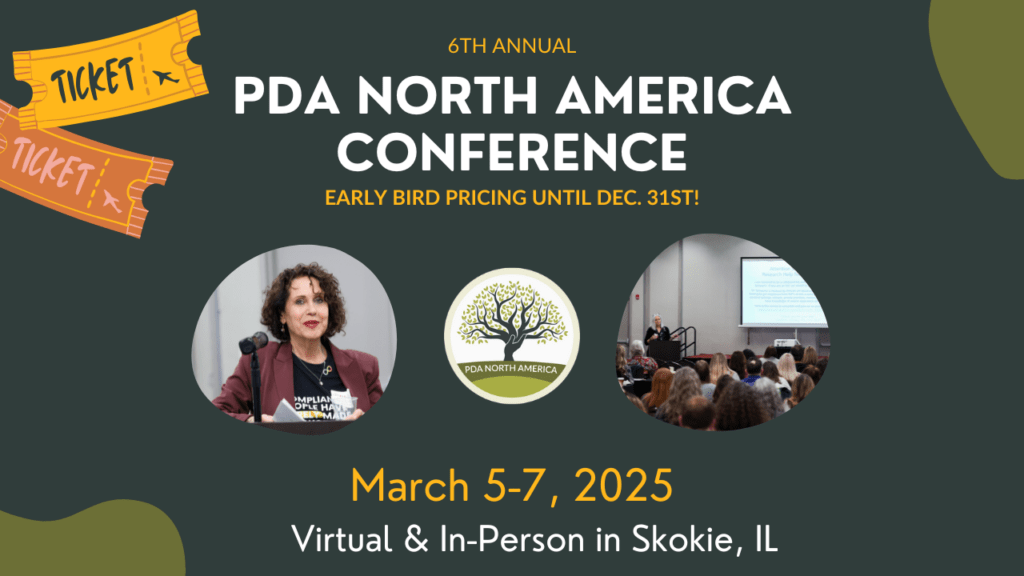By Brook Madera of No Pressure PDA
Note: This isn’t intended for diagnostic purposes, and keep in mind that there is usually an overlap in conditions.
Expanding the discussion to compare and contrast different diagnoses that look similar to PDA. By request I’ve included B&W versions at the end.
From a clinical perspective it becomes difficult to accurately diagnose PDA because of how many similarities it shares with other diagnoses. Sometimes the clue is in the cure, as in: how does this person respond to which kind of supports? PDA requires a much more flexible and dynamic approach.
Note too I don’t mean anything derogatory by using the term “rational” or “irrational”; my use is only to indicate that it can be impossible to predict with certainty what is going to trigger a PDA individual. Our needs are still real though whether or not the reaction can be explained.
Autism + EDA (extreme demand avoidance)

What is it?: A circumstantial condition (long or short term) that occurs based on discernible triggers or stresses.
Looks like?: Typically obvious reactions (Fight, Flight, Freeze) to demands/triggers. With practice individual can use more “socially acceptable” methods (masking) to cope, but find this draining. Rational qualities.
Approach: Accommodating specific demands/triggers. Providing appropriate structures based on individual needs, and allowing time to rest as this person is experiencing “autistic burnout”.
PDA

What is it?: A distinct neurotype whose “avoidances” can seem to come and go depending on the individual’s inclination and ability to mask them.
Looks like?: Initially comes across as socially manipulative tactics (inappropriate humor, maladaptive daydreaming, etc.) as an instinctive avoidance of perceived demands/stress, but can escalate to Fight, Flight, or Freeze.
Triggers and behavior frequently shift and are difficult to determine with certainty. Irrational qualities.
Approach: Flexible lifestyle to accommodate unpredictable needs. Flexible expectations to keep arousal low. Flexible interactions to give room for the individual to not feel pressured to engage.
Trauma (PTSD, C-PTSD)

What is it?: A temporary or long-term condition that consists of unique triggers tied to an individual’s long- or short-term experience with trauma; can impact all neurotypes.
What does it look like?: An overall state of vigilance that can take on sophisticated social strategies to avoid triggers, escalating to Fight, Flight or Freeze. Triggers are normally consistent in that they are trauma and/or personality specific. Rational qualities.
Approach: Therapies and interventions to help the individual process their trauma. Permanently or temporarily adjust lifestyle to avoid triggers and give time to rest.
Black and white versions:



Read more from Brook here







